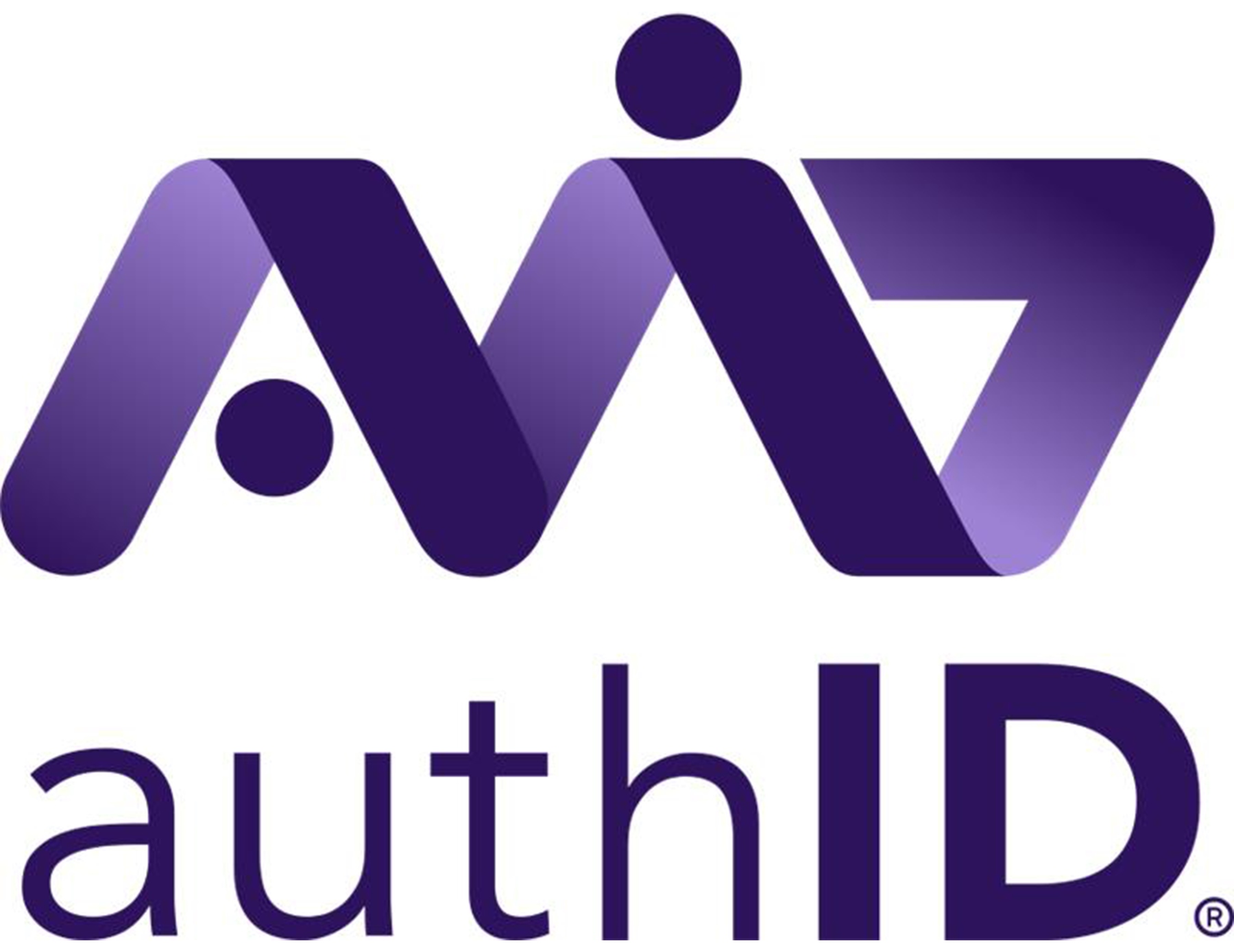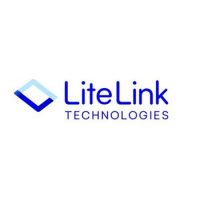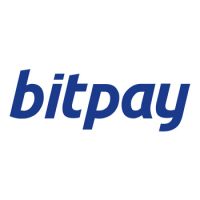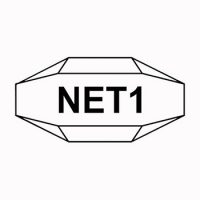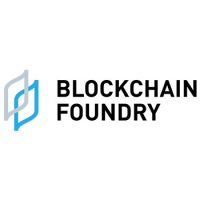Blockchain
Blocks & Headlines: Today in Blockchain – March 26, 2025 – Featuring CME, Google, Deadfellaz, Celo, Custodia Bank & Cyberhaven

In the fast-evolving universe of blockchain and cryptocurrency, every day brings transformative breakthroughs and paradigm shifts that redefine the digital financial landscape. On March 26, 2025, the blockchain space is buzzing with innovative trading experiments, novel integrations between virtual and real-world assets, regulatory challenges met head-on by emerging startups, groundbreaking network migrations, and visionary stablecoin initiatives. This op-ed-style daily briefing offers an in-depth analysis of the day’s most significant blockchain stories—blending concise news reporting with expert insights and commentary on what these developments mean for the future of decentralized finance, digital assets, and Web3 innovation.
Throughout this article, we will explore key trends shaping blockchain and cryptocurrency today. We begin with an exclusive look at CME Group’s experimental 24-hour trading move powered by Google’s blockchain technology—a strategic initiative that could revolutionize traditional finance. Next, we delve into the creative efforts of the Deadfellaz team as they unveil a novel tool designed to bridge the gap between digital tokens and real-life blockchain applications. We then examine how blockchain startups in India are expanding in spite of regulatory headwinds, demonstrating the resilience and adaptability of the decentralized ecosystem. In addition, we discuss the monumental migration of the Celo network to a layer 2 solution—a move that heralds a new era for scalability and transaction efficiency. The briefing continues with the story of Custodia Bank and Vantage Bank, who have successfully issued a bank-backed stablecoin on a permissionless blockchain, signaling an exciting convergence of traditional finance and decentralized technology. Finally, we round out the day’s news with Cyberhaven’s breakthrough in advanced AI content understanding and computer vision, an innovation that promises to enhance data security and digital asset monitoring across blockchain networks.
In this comprehensive analysis, we delve into each story with a balanced mix of factual coverage and opinion-driven insights. As blockchain, cryptocurrency, Web3, DeFi, and NFTs continue to reshape the global economic landscape, staying informed and adaptive is crucial.
I. Introduction: The Pulse of Blockchain Innovation
The blockchain revolution is no longer a futuristic vision—it is a dynamic, ever-present reality. Every day, blockchain technology challenges traditional paradigms, pushing the boundaries of what is possible in finance, technology, and governance. The rapid adoption of decentralized systems is transforming industries by enabling secure, transparent, and immutable recordkeeping. As digital assets gain mainstream acceptance and Web3 platforms democratize economic participation, blockchain is evolving into an indispensable pillar of modern society.
Today’s briefing encapsulates several groundbreaking developments in blockchain and cryptocurrency. We start with a pivotal test by CME Group in collaboration with Google’s blockchain technology—a project that could dramatically alter trading operations. We also highlight creative projects from the NFT and digital art realm, such as the Deadfellaz initiative that seeks to link the physical and digital worlds. Amid these exciting advancements, blockchain startups in regions like India are thriving despite regulatory uncertainties, illustrating the robust spirit of innovation. Meanwhile, major projects like Celo are setting new benchmarks with technological upgrades that promise enhanced scalability and performance. Traditional financial institutions are also entering the decentralized arena by launching stablecoins on permissionless blockchains, demonstrating a growing convergence between legacy finance and the decentralized future. Finally, the integration of AI and computer vision into blockchain security by Cyberhaven marks a promising step forward in protecting digital assets and ensuring the integrity of blockchain networks.
In the sections that follow, each story is examined in detail, offering both a factual summary and a deeper analysis of the broader implications for the blockchain ecosystem. With the pace of innovation accelerating and the stakes higher than ever, understanding these trends is essential for anyone engaged in the digital revolution.
II. CME and Google’s Blockchain Experiment: A New Chapter in 24-Hour Trading
A. Overview of the Experiment
In a bold move that blurs the lines between traditional finance and decentralized technology, CME Group has recently embarked on a 24-hour trading experiment powered by Google’s cutting-edge blockchain technology. As reported by Bloomberg, this initiative is designed to test the feasibility of round-the-clock trading facilitated by a distributed ledger system. The project aims to reduce latency, enhance transparency, and streamline trade settlements across global markets.
The experiment involves leveraging Google’s blockchain infrastructure to create a secure and efficient trading environment. By automating complex processes and enabling real-time data verification, the initiative could potentially transform conventional trading floors into agile, blockchain-powered ecosystems. This is particularly significant in an era where speed, security, and cost-efficiency are paramount.
B. Technical Innovations and Strategic Importance
At the heart of this initiative lies the fusion of blockchain’s immutable ledger with Google’s robust cloud technology. The partnership is a testament to the growing recognition that blockchain can offer substantial improvements over legacy systems. The experiment is engineered to handle high-frequency trading volumes while ensuring the integrity and security of each transaction.
From a technical perspective, the system utilizes smart contracts and distributed consensus algorithms to automate the clearing and settlement process. This not only minimizes human error but also enhances the speed of transaction processing. The potential benefits are enormous: reduced operational costs, enhanced liquidity, and a more resilient trading infrastructure that can operate seamlessly 24/7.
C. Market Implications and Expert Commentary
In our view, CME’s exploration of blockchain technology in trading is a harbinger of significant change. Traditional financial markets have long been burdened by inefficiencies related to outdated systems and manual interventions. By integrating blockchain, CME is not only positioning itself at the forefront of financial innovation but also setting the stage for a new era of trading where transparency and efficiency are non-negotiable.
Industry experts suggest that if this experiment proves successful, it could pave the way for broader adoption of blockchain-based trading systems. This would likely lead to a reduction in transaction costs, faster settlement times, and an overall more efficient market environment. The implications extend beyond the trading floor, potentially impacting regulatory frameworks, risk management strategies, and even the global economic order.
Source: Bloomberg
III. Deadfellaz Creators Unveil a Real-Life Blockchain Tool
A. Bridging the Gap Between Digital Art and the Real World
In a creative twist on the traditional use cases of blockchain, the team behind the popular Deadfellaz NFT project has unveiled a new tool designed to link real-life assets with blockchain technology. As detailed by Decrypt, the innovative tool aims to integrate physical assets into the blockchain ecosystem, thereby expanding the utility of NFTs and digital collectibles.
This breakthrough represents a significant step forward for the NFT community. By providing a mechanism to authenticate and track physical items on the blockchain, the tool offers a seamless bridge between the tangible and the digital. This not only enhances the value proposition of NFTs but also opens up new opportunities for asset verification, supply chain management, and digital ownership.
B. Technological Breakthrough and Use Cases
The technology behind the new tool is built on a robust blockchain framework that supports secure data storage and immutable recordkeeping. By leveraging cryptographic proofs and smart contract functionalities, the system ensures that every physical asset linked to the blockchain is verifiable and tamper-proof.
For collectors and investors, this innovation means greater confidence in the authenticity and provenance of digital art and other physical collectibles. It also paves the way for novel applications in industries such as luxury goods, real estate, and even automotive sectors—where proof of ownership and authenticity are crucial. The potential for fractional ownership and enhanced liquidity in traditionally illiquid markets is another exciting prospect that arises from this integration.
C. Opinion and Future Impact
In our assessment, the tool developed by the Deadfellaz creators is a game changer for the blockchain and NFT space. It transcends the conventional boundaries of digital art by directly linking the physical and digital realms. This convergence can foster a more integrated ecosystem where assets are not confined by physical limitations, thereby opening up a plethora of new business models and revenue streams.
Moreover, as the NFT market matures, such innovations will likely become standard practice, reinforcing the role of blockchain as the backbone of asset authentication and ownership. The broader impact is clear: by solving critical issues of trust and verification, the blockchain is poised to become a universal platform for all forms of digital and physical transactions.
Source: Decrypt
IV. Blockchain Startups in India: Expansion Amid Regulatory Challenges
A. The Resilience of Innovation in a Tough Environment
Despite facing significant regulatory hurdles, blockchain startups in India are experiencing robust expansion, as reported by the Times of India. The article highlights that even in a challenging environment, innovative companies are finding creative ways to thrive and push the boundaries of decentralized technology. The enthusiasm and adaptability of these startups underscore the global momentum behind blockchain, even in regions where the regulatory landscape remains complex and sometimes uncertain.
India’s blockchain ecosystem is characterized by a vibrant community of entrepreneurs and developers who are leveraging cutting-edge technologies to solve local and global challenges. From financial inclusion and remittances to supply chain management and digital identity verification, blockchain is finding applications across a wide spectrum of industries.
B. Navigating the Regulatory Maze
One of the primary challenges for blockchain startups in India is the evolving regulatory framework. While uncertainty around policies can be a deterrent, many startups are turning these challenges into opportunities. By engaging in dialogue with regulators and emphasizing the transformative potential of blockchain, these companies are working to shape a more favorable environment for innovation.
This period of regulatory flux is not without its merits. It forces startups to adopt robust compliance measures and fosters a culture of accountability and transparency. In the long run, these practices will likely contribute to a more secure and reliable blockchain ecosystem, which is critical for mass adoption.
C. Editorial Insights and the Road Ahead
In our view, the expansion of blockchain startups in India despite regulatory challenges is a testament to the indomitable spirit of innovation. The resilience and ingenuity displayed by these entrepreneurs are indicative of a broader global trend where technological advancement outpaces regulatory adaptation. This dynamic, while challenging in the short term, promises to yield long-term benefits as a more mature and robust blockchain market emerges.
For investors and policymakers alike, the Indian blockchain scene offers a valuable case study in balancing innovation with regulatory oversight. The lessons learned here could inform broader policy reforms that facilitate growth while protecting stakeholders from undue risks.
Source: Times of India
V. Celo’s Migration to a Layer 2 Network: Ushering in a New Era
A. The Strategic Rationale Behind the Migration
In a landmark development for blockchain scalability and efficiency, the Celo network has successfully completed its migration to a layer 2 solution, as reported by CoinDesk. This strategic move is designed to address the scalability challenges that have long hindered blockchain performance, particularly in the realm of decentralized finance (DeFi) and digital asset transactions.
Layer 2 solutions are critical for reducing transaction fees, increasing throughput, and enhancing overall network efficiency. By moving to a layer 2 framework, Celo is positioning itself to handle higher transaction volumes while maintaining the security and decentralization principles that underpin its ecosystem. This migration is expected to open up new possibilities for faster, cheaper, and more reliable blockchain applications.
B. Technical Enhancements and Benefits
The migration to a layer 2 network involves the deployment of advanced off-chain processing techniques and optimized consensus algorithms. These improvements allow Celo to process transactions off the main chain, thereby alleviating congestion and reducing computational overhead. The resulting system is not only more efficient but also capable of supporting a broader array of applications—from DeFi protocols to NFT marketplaces and beyond.
The benefits of this migration extend to users, who can expect lower fees, faster confirmation times, and a smoother overall experience. For developers, the enhanced scalability creates a more fertile environment for building innovative blockchain applications without the limitations imposed by high network congestion.
C. Analysis and Future Outlook
In our opinion, Celo’s migration to a layer 2 network is a pivotal moment for the blockchain community. It represents a significant leap forward in addressing one of the most persistent challenges facing decentralized systems: scalability. As blockchain platforms continue to evolve, the integration of layer 2 solutions will be essential for supporting the next wave of innovation in digital finance and beyond.
This development not only enhances Celo’s competitive edge but also sets a benchmark for other blockchain networks striving to achieve similar performance improvements. The future of blockchain is undoubtedly linked to the successful implementation of scalable, efficient technologies, and Celo’s initiative is a clear indicator of the direction in which the industry is headed.
Source: CoinDesk
VI. Custodia Bank & Vantage Bank: Launching a Bank-Issued Stablecoin on a Permissionless Blockchain
A. Bridging Traditional Finance and Decentralized Innovation
In a groundbreaking move that highlights the convergence of traditional finance and blockchain technology, Custodia Bank and Vantage Bank have successfully issued a bank-backed stablecoin on a permissionless blockchain, as reported by The Paypers. This initiative marks a significant milestone in the evolution of digital currencies, offering a stable and secure alternative to the volatility often associated with cryptocurrencies.
The stablecoin, which is fully collateralized by traditional assets, represents a major step forward in the mainstream adoption of blockchain-based financial instruments. By leveraging the inherent transparency and security of a permissionless blockchain, the banks are able to offer a product that combines the reliability of conventional banking with the innovative potential of decentralized finance.
B. Technical and Operational Insights
The process of launching a bank-issued stablecoin involves integrating complex regulatory frameworks with advanced blockchain protocols. The permissionless nature of the blockchain ensures that the stablecoin is transparent and accessible, while robust compliance measures safeguard investor interests. The collaboration between Custodia Bank and Vantage Bank is particularly noteworthy, as it demonstrates a commitment to bridging the gap between legacy financial systems and the disruptive world of blockchain.
For consumers and investors, this stablecoin offers a unique value proposition: it provides the stability of fiat currencies while leveraging the speed, security, and efficiency of blockchain technology. This combination is expected to drive broader adoption and pave the way for more hybrid financial products in the future.
C. Broader Implications and Strategic Analysis
From an op-ed perspective, the launch of a bank-issued stablecoin on a permissionless blockchain is a watershed moment for the financial industry. It signals that traditional banks are not only willing to embrace decentralized technologies but are actively integrating them to create innovative financial products. This convergence has the potential to disrupt conventional banking models, ushering in an era where digital currencies become a fundamental component of everyday transactions.
Moreover, the success of this initiative could serve as a catalyst for further regulatory clarity and industry standardization, ultimately fostering a more secure and resilient digital economy.
Source: The Paypers
VII. Cyberhaven’s Advanced AI and Computer Vision: Revolutionizing Content Analysis in Blockchain
A. Introducing Next-Generation Security Measures
Cyberhaven is making waves with its introduction of advanced AI content understanding and computer vision capabilities—a development that is set to revolutionize how blockchain networks handle digital content and secure data. As reported by SecurityInfoWatch, Cyberhaven’s innovative approach leverages machine learning and computer vision to automatically analyze and categorize digital content, ensuring that data stored on blockchain networks is both accurate and secure.
This breakthrough is particularly significant for blockchain applications that rely on the integrity of large volumes of multimedia data. By integrating advanced AI, Cyberhaven aims to enhance threat detection, prevent fraud, and maintain the quality of data flowing through decentralized networks.
B. Technical Innovations and Use Cases
Cyberhaven’s platform is built on sophisticated deep learning models that can parse visual, textual, and contextual information with high accuracy. The system’s ability to understand content in real time not only strengthens security protocols but also opens up new possibilities for content management, digital rights, and asset verification on blockchain platforms.
For enterprises that manage vast repositories of digital data, this technology represents a game-changing solution. It enables more effective monitoring of blockchain-based systems, ensuring that all transactions and data entries meet rigorous standards of authenticity and security.
C. Strategic Perspective and Future Trends
In our analysis, Cyberhaven’s integration of AI and computer vision into blockchain security marks a major milestone in the evolution of decentralized systems. It underscores the growing importance of advanced technologies in safeguarding digital ecosystems—a trend that is likely to accelerate as blockchain adoption expands across industries. By setting new standards for content analysis and data integrity, Cyberhaven is paving the way for a future where blockchain networks are not only more secure but also more intelligent and adaptive.
Source: SecurityInfoWatch
VIII. Synthesis and Key Takeaways: The Future of Blockchain & Cryptocurrency
A. Convergence of Innovation and Traditional Finance
Today’s developments highlight a critical theme in the blockchain and cryptocurrency space: the convergence of traditional finance with decentralized technology. Whether it is CME’s experiment with blockchain-powered trading or the successful issuance of a bank-issued stablecoin by Custodia Bank and Vantage Bank, the lines between legacy systems and innovative blockchain solutions are blurring. This trend is driven by the need for efficiency, transparency, and security in an increasingly digital economy.
B. Embracing Scalability and Interoperability
The migration of the Celo network to a layer 2 solution is a clear indicator that scalability and interoperability are at the forefront of blockchain innovation. As networks evolve to handle higher volumes and more complex transactions, scalable solutions become essential for maintaining performance and user satisfaction. These technological enhancements are not just incremental improvements—they represent a fundamental shift in how blockchain networks will operate in the future.
C. The Role of Regulation and Market Adaptation
Despite the challenges posed by regulatory uncertainties—such as those faced by blockchain startups in India—the overall trajectory remains positive. Regulatory challenges, while formidable, are driving innovation and compelling companies to adopt higher standards of compliance and security. This, in turn, builds trust and paves the way for mass adoption of blockchain technologies.
D. The Intersection of AI and Blockchain
Cyberhaven’s integration of advanced AI and computer vision into content analysis exemplifies the powerful synergy between artificial intelligence and blockchain technology. As these technologies converge, the potential for enhanced security, improved data integrity, and new application domains expands exponentially. This is a clear signal that the future of blockchain will be increasingly defined by cross-disciplinary innovations that harness the best of multiple technological realms.
E. Final Thoughts: Charting a Path Forward
In our opinion, the day’s developments underscore a broader narrative of transformation, resilience, and opportunity in the blockchain and cryptocurrency industry. From transformative trading experiments and innovative NFT tools to scalable network migrations and the fusion of traditional finance with decentralized technology, today’s news highlights a dynamic landscape that is both challenging and promising.
As blockchain and digital currencies continue to mature, the interplay between innovation, regulation, and market forces will shape the future of this revolutionary technology. The convergence of traditional finance with blockchain, the integration of advanced AI into digital security, and the relentless drive toward scalable, interoperable systems are all essential components of this unfolding story. For industry participants, investors, and enthusiasts, staying informed and adaptive is key to navigating the rapidly evolving terrain of blockchain and cryptocurrency.
IX. Conclusion: Reflecting on Today’s Blockchain Headlines
As we wrap up today’s briefing, the major takeaways are clear: blockchain technology is evolving at a breakneck pace, and its influence is being felt across every facet of modern finance and technology. CME’s experiment with Google’s blockchain technology signals a new era of efficiency in traditional trading, while creative initiatives like those from the Deadfellaz team expand the horizons of NFTs by linking digital and physical assets. Despite regulatory challenges, the resilient growth of blockchain startups in India demonstrates that innovation thrives even in uncertain times.
Celo’s migration to a layer 2 network promises enhanced scalability and a more robust foundation for decentralized finance, and the successful launch of a bank-issued stablecoin by Custodia Bank and Vantage Bank is a clear indication that traditional finance is embracing the decentralized revolution. Finally, Cyberhaven’s cutting-edge work in integrating AI and computer vision into blockchain security sets the stage for a future where digital data is more secure, reliable, and intelligently managed.
In summary, today’s blockchain headlines underscore the convergence of traditional finance and decentralized innovation, the critical need for scalability and security, and the transformative potential of merging AI with blockchain. For anyone involved in the blockchain ecosystem—whether you’re a developer, investor, policy maker, or enthusiast—these developments offer both inspiration and a clear roadmap for the future.
The world of blockchain is rapidly transforming before our eyes, and staying ahead means embracing change, fostering innovation, and continuously reimagining what’s possible in the realm of digital finance. As the blockchain revolution marches forward, today’s insights provide a window into a future where technology, finance, and creativity converge to build a more secure, transparent, and equitable digital landscape.
The post Blocks & Headlines: Today in Blockchain – March 26, 2025 – Featuring CME, Google, Deadfellaz, Celo, Custodia Bank & Cyberhaven appeared first on News, Events, Advertising Options.
Blockchain
authID Reports Financial and Operating Results for the First Quarter Ended March 31, 2025
Blockchain
Blockchain Futurist Conference Releases Final Schedule
Blockchain
U.S. Factoring Services Market Analysis by Product, Technology, Grade, Application and End-user (2019-2032) – Next-Gen Technologies Drive Surge in Alternative Financing Access for SMEs
-
Blockchain7 days ago
Colb Asset SA Raises $7.3 Million in Oversubscribed Round to Bring Pre-IPO Giants to Blockchain
-

 Blockchain Press Releases6 days ago
Blockchain Press Releases6 days agoHTX and Justin Sun Launch $6M Mars Program Special Edition, Offering One User a Historic Space Journey
-

 Blockchain5 days ago
Blockchain5 days agoBitget Blockchain4Youth sostiene l’innovazione del Web3 e dell’IA all’hackathon “Build with AI” di Google Developer Group
-

 Blockchain5 days ago
Blockchain5 days agoBlocks & Headlines: Today in Blockchain – May 9, 2025 | Robinhood, Solana, Tether, China, Women in Web3
-

 Blockchain Press Releases5 days ago
Blockchain Press Releases5 days agoBybit Surpasses 70 Million Users, Reinforces Commitment to Transparency and Institutional Growth
-

 Blockchain6 days ago
Blockchain6 days agoBlocks & Headlines: Today in Blockchain – May 7, 2025 | Coinbase, Riot Games, Curve DAO, Litecoin, AR.IO
-

 Blockchain7 days ago
Blockchain7 days agoFlipido Trading Center Launches ‘Flipido Learn’ Platform to Empower Crypto Investors Through Education
-

 Blockchain Press Releases6 days ago
Blockchain Press Releases6 days agoMEXC Lists USD1, Accelerating Global Stablecoin Innovation with World Liberty Financial




